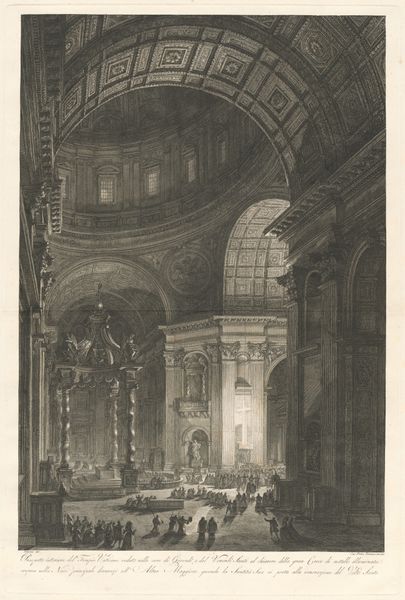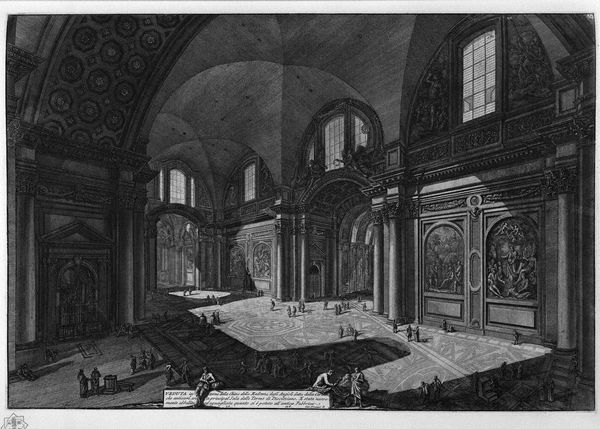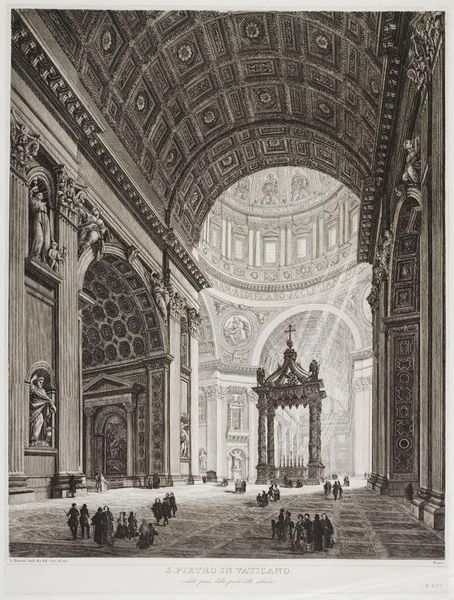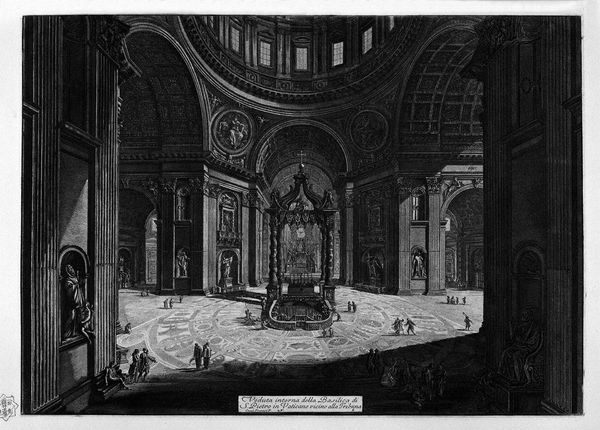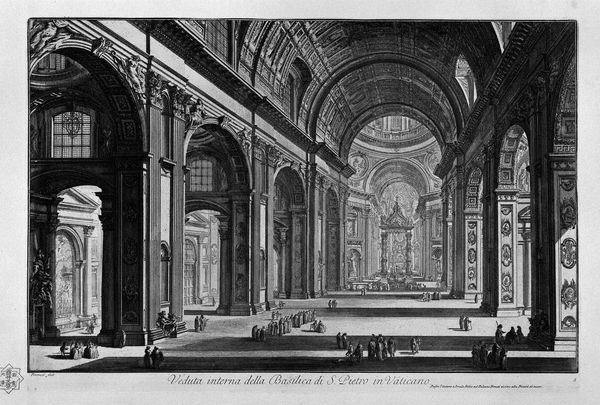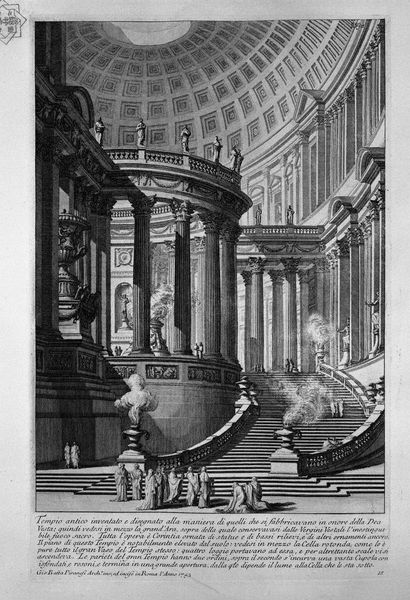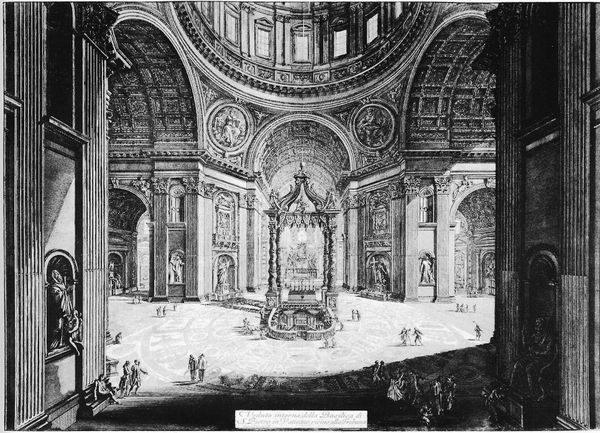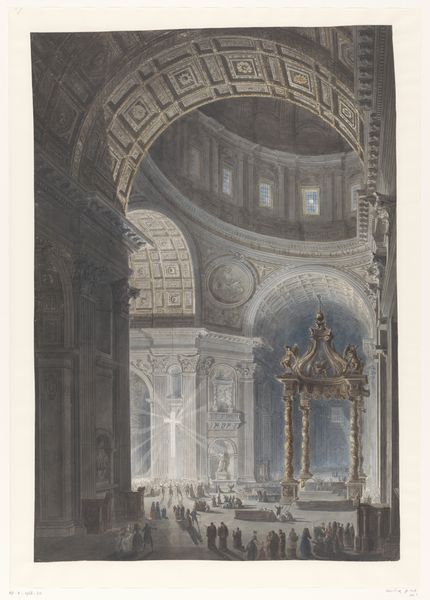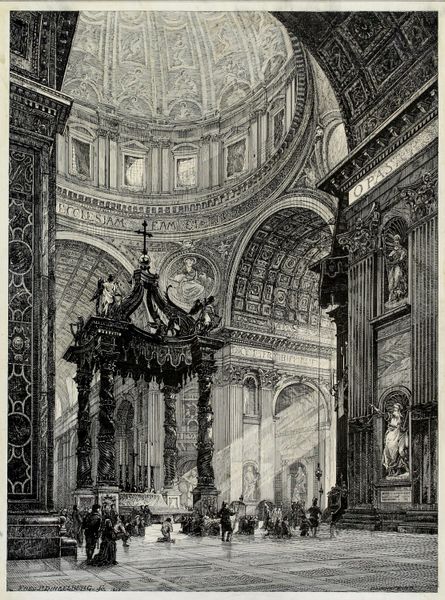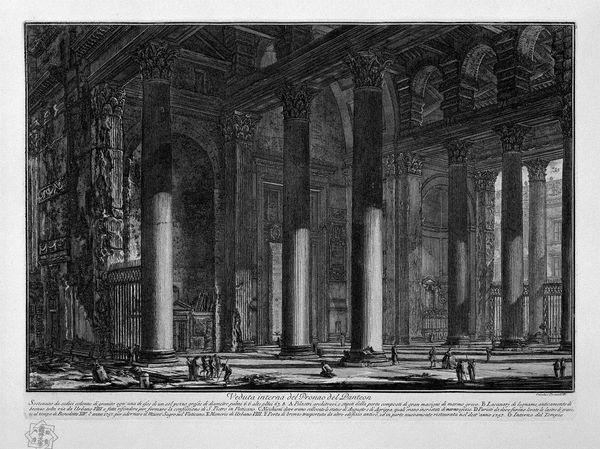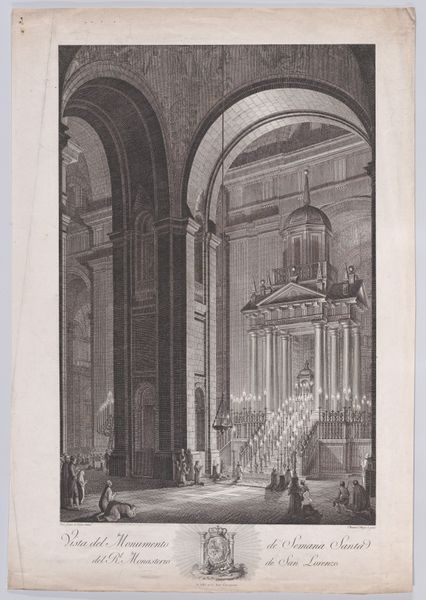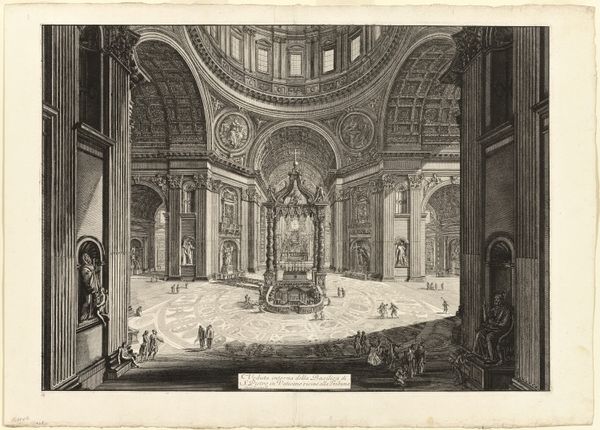
Prospetto anteriore del Tempio Vaticano venduto nelle sere di Giovedì del Venerd Santo al chiarore della gran Croce di metallo illuminata, disegno di L Despres
0:00
0:00
drawing, print, etching, engraving, architecture
#
drawing
#
baroque
# print
#
etching
#
holy-places
#
perspective
#
line
#
cityscape
#
history-painting
#
engraving
#
architecture
Copyright: Public domain
Editor: This print, titled "Prospetto anteriore del Tempio Vaticano venduto nelle sere di Giovedì del Venerdì Santo al chiarore della gran Croce di metallo illuminata, disegno di L Despres," appears to be an etching or engraving. It depicts the interior of St. Peter's Basilica. It’s awe-inspiring, but almost oppressive with its grandeur. What stands out to you? Curator: The intense detail achieved through the printmaking process, likely etching or engraving, immediately grabs my attention. Consider the labor invested in producing such intricate lines. We're not just seeing an image of the Vatican; we are witnessing a moment where labor, the materials of the plate, the acid, the paper and ink, and the distribution of the print intersect with religious iconography. Editor: So, you're focusing on how the artwork was made? Curator: Precisely. Think about the social context: this print was likely sold during Holy Week. Its purpose? To be consumed as both a religious souvenir and a testament to the grandeur of the Catholic Church. Its availability also suggests a democratization of imagery, distributing images of power to the masses. Is it reinforcing that power, or subtly challenging it? Editor: That's fascinating. I hadn't considered the print as a commodity itself, almost like a mass-produced devotional object. How do you think that mass production affects the viewing experience compared to, say, seeing the Basilica in person? Curator: Mass production removes the direct physical experience of the building. The print flattens, disseminates, potentially weakens. However, this accessibility alters consumption, embedding St Peter's in the everyday lives of those who purchased the image, creating a simulacrum available for regular worship. This transformation of a real place into a tangible commodity creates a new kind of social capital, distributed among the masses rather than locked within a sacred site. Editor: That really changes how I see this. I was caught up in the aesthetics, but understanding its production and circulation gives it a whole new layer of meaning. Curator: Exactly! Art exists not just as a visual object, but as a product of its time and its means of production. Understanding those means can be truly revealing.
Comments
No comments
Be the first to comment and join the conversation on the ultimate creative platform.
